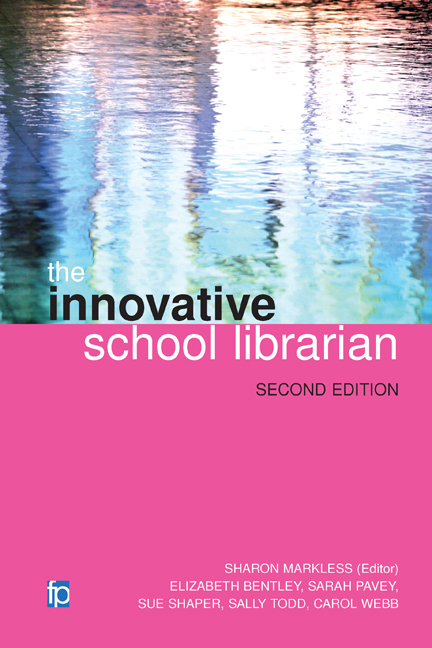Book contents
- Frontmatter
- Contents
- Preface
- Acknowledgements
- PART 1 WHO IS THE LIBRARIAN?
- PART 2 YOUR COMMUNITY: FROM PERCEPTIONS TO PRACTICE
- 4 Identifying and understanding your community
- 5 Making a positive response to challenges
- 6 Generating and using evidence of impact
- PART 3 MOVING FORWARD
- Appendix 1 Levels of education
- Appendix 2 School library self-evaluation questions
- Appendix 3 An example of a completed self-evaluation summary sheet
- Appendix 4 SWOT analysis
- Appendix 5 Choosing priorities in development planning: sample grid
- Appendix 6 Example of a force field analysis: a tool for managing change
- Appendix 7 Managing change: process and principles
- References
- Index
4 - Identifying and understanding your community
from PART 2 - YOUR COMMUNITY: FROM PERCEPTIONS TO PRACTICE
Published online by Cambridge University Press: 08 June 2018
- Frontmatter
- Contents
- Preface
- Acknowledgements
- PART 1 WHO IS THE LIBRARIAN?
- PART 2 YOUR COMMUNITY: FROM PERCEPTIONS TO PRACTICE
- 4 Identifying and understanding your community
- 5 Making a positive response to challenges
- 6 Generating and using evidence of impact
- PART 3 MOVING FORWARD
- Appendix 1 Levels of education
- Appendix 2 School library self-evaluation questions
- Appendix 3 An example of a completed self-evaluation summary sheet
- Appendix 4 SWOT analysis
- Appendix 5 Choosing priorities in development planning: sample grid
- Appendix 6 Example of a force field analysis: a tool for managing change
- Appendix 7 Managing change: process and principles
- References
- Index
Summary
Throughout this book a key message has emerged: the librarian who is closely identified with the processes of teaching and learning within the school has the power to make the most difference. Understanding our community and the range of opportunities there is crucial if we are to make this a reality. This is not as easy as it might first appear. Schools are highly complex organizations and political in nature – and things are not always as they appear. Exploring beneath the surface will help us to ascertain the teaching and learning priorities of the school so that we can focus our energies. Ultimately our research informs our management of change and leadership of learning.
How do we define our community?
We have to be clear about how we see our school community. Since it consists of individuals whose needs are ever changing as they grow and develop, study of these needs enables us to evaluate our effectiveness in developing the library's role. Our professional ethics require us to ensure that our services are representative and inclusive of all in that community, but in practical terms we have to decide who we think the library is for. Should we buy popular adult fiction for staff holiday reads? Should we buy books in Russian for just one pupil when Russian is not on the curriculum? Should we lend materials to the local primary school? Should we provide a collection of resources for school governors?
There is also the wider community of parents and governors. Do we see provision for these groups as part of our role? In the UK, schools in the independent sector must develop their role of charitable use, and in the state sector schools are under pressure to extend their opening hours and enhance community involvement. Do we need to think about who will use our services beyond the school walls and if so how do we respond to this responsibility? Recent technological advances and the use of social media have made it easier to share information with others.
- Type
- Chapter
- Information
- The Innovative School Librarian , pp. 53 - 70Publisher: FacetPrint publication year: 2016



